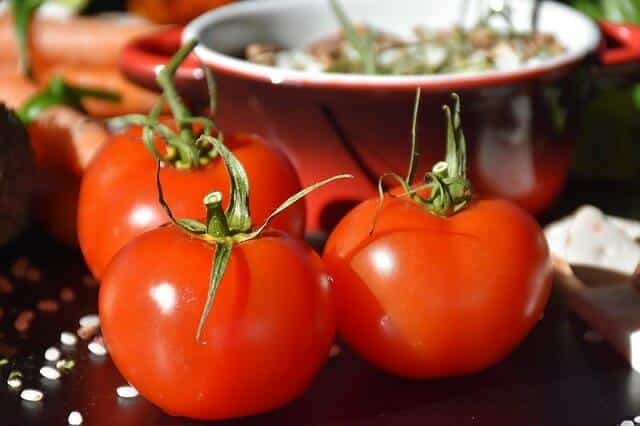You may have heard that it’s not a good idea to store tomatoes in the fridge. And, in fact, the optimal storage temperature for tomatoes is 55-70 degrees Fahrenheit. Colder temps damage both the aroma molecules and the texture of tomatoes, which affects their palatability.
However, room temperature in many of our homes is higher than 55-70 degrees, particularly in the warm summer months when we’re picking garden-fresh tomatoes. Unless you’re fortunate enough to have a wine cooler or wine fridge (which, optimally, should be set to 55 degrees Fahrenheit), you need to pick between the lesser of the two evils: the too-cold fridge or the too-warm countertop.
This New All-Natural Fertilizer Doubles Garden Production!
The best thing to do is strike a balance. Start by checking for ripeness. When lightly squeezed, a perfectly ripe tomato should give very lightly to the touch. If it doesn’t give at all, it’s not ripe yet; if it’s quite soft, it’s overripe.
Underripe and ripe tomatoes are best kept on the countertop as long as possible. As well, it’s best to store them stem- or scar-side down. There are several websites that discuss the stem-side down storage method, and some sites have done their own experiments to prove that it increases shelf life. It does work, but everyone seems unsure of the science behind it. It’s speculated that there are one of two things going on.
First, while the skin of a tomato is effective at keeping out bacteria, cracks in the scar can let bacteria in. When a tomato is stored upside down, the liquid inside the fruit moves to the top of the tomato, which provides a sort of seal to the cracks in the scar and a barrier to bacteria. The other possibility is that storing a tomato upside down somehow affects the way ethylene gas is transmitted. Fruits naturally create ethylene, which aids in the ripening process. When the production or transmission of ethylene is slowed, the ripening process slows as well.
Tomatoes stored at room temperature should be checked regularly, particularly if your home is on the warm side. The warmer it is, the more quickly tomatoes will ripen and subsequently mold or rot. Any tomatoes that are past optimal ripeness should be tossed in the fridge. Some spots in the fridge are slightly warmer than others, such as on the top shelf and near the door, and those are the ideal spots for tomatoes. But, in the end, while they may lose some palatability in the fridge, they will definitely lose palatability if they start to go bad on the countertop. Bottom line: Refrigerate when necessary.
Do you have any advice for extending the life of tomatoes? Share your tips in the section below:
 Off The Grid News Better Ideas For Off The Grid Living
Off The Grid News Better Ideas For Off The Grid Living




